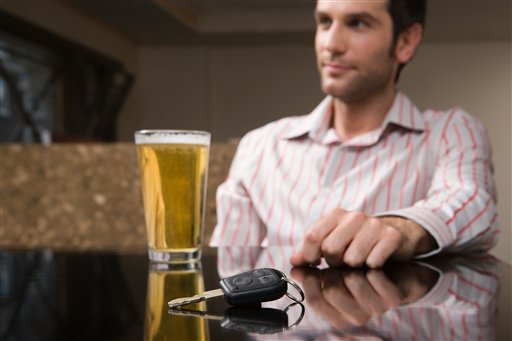The federal government is investing in technology to "continuously monitor" how much Americans are drinking if they have been arrested for driving under the influence (DUI).
The National Science Foundation awarded $50,000 to Florida International University to develop a watch-like device linked to a smartphone that police departments could use to monitor the blood alcohol content of DUI offenders.
"The proposed technology aims to provide law enforcement and judiciary agencies the real-time blood alcohol content data of the driving under influence offenders," according to a grant for the project. "It can be used as a blood-alcohol-content alert system by the user while they indulge themselves in social drinking."
"This award was funded through the NSF Innovation Corps (I-Corps) program, the primary goal of which is to foster entrepreneurship that will lead to the commercialization of technologies based on NSF-funded fundamental research," a representative from the National Science Foundation said. "The I-Corps program is an entrepreneurship education program where participants attempt to validate the commercial opportunity of their ideas through customer discovery and business model development. Programs such as I-Corps are great examples of how NSF supports research that enhances our nation’s security, drives the U.S. economy, and advances our knowledge to sustain global leadership."
Shekhar Bhansali, chair of the electrical and computer engineering Department at Florida International University who is leading the project, said he and his partners just incorporated a company, Spot BAC, last week, and are working with police departments in Miami so they can eventually use the technology.
"We are now building up a set of prototypes that should be tested because anything that has a biological measurement needs a lot of tests," Bhansali told the Washington Free Beacon. "We went to find partners to actually deploy it and see that this really works in a controlled setting. A lot of wearable devices that hit the market is typically hobby-sensing, if you will. It’s like I want to know where I am, which is okay, as long as the information you’re pulling out does not have any negative consequences."
"With alcohol what happens is, let’s say I put a watch on you, and it says you are drunk, you go to extra levels to not get into trouble if you’re not drunk," he said. "If you’re drunk, and it doesn’t tell you you're drunk, then it's a bigger problem. If your BAC is .05 or .08 but the watch doesn't tick it, then it’s a bigger problem."
Bhansali said he is working to make sure the technology is scientifically "robust," and envisions that the product could be used in multiple ways.
"The funny thing with DUI is this: most people who get in trouble are typically, it’s not a case of, ‘Oh, I didn’t know I was drunk,’" he said. "You pretty much knew you would get into trouble if somebody pulled you over, you were just taking a chance."
"For every person who takes a chance there are a whole bunch of people that get away," Bhansali said. "So what we’re thinking is two ways, there is, yes, helping people without being very obvious, learning how your alcohol levels are. An eighteen-year-old on a college campus, or a 40-year-old, or me, or you. We all believe we can estimate our alcohol levels; it’s very hard to do that. Nobody has trained us to do that. You just assume that this is OK, and this is not OK."
Bhansali said there is no way for a person to know how drunk they are if they are drinking craft beers. "If you’re drinking Heinekens only, yes, I can take a beer an hour, and I’ll be OK. But if I go to the fancy stuff, I have no idea what I’m doing," he said.
The alcohol monitors could be a "stocking stuffer" at Christmas, but more likely for a person who has been arrested for a DUI. The federal government is seeking to lower the legal driving limit to one drink or "even lower."
"It is not your normal market we are going after," Bhansali said. "It’s not somebody going to the bar, say you or me—you could use it, but the primary market is not going to be me or you using it."
Bhansali said his team has to go county to county to get prototypes of the devices into the legal system, and started with Miami-Dade and Brevard County, Florida, and will expand from there. His team is also partnering with the University of Miami for clinical trials of the smart watches to "see whether they really work the way we think it works."
The devices could be used for court-ordered monitoring as a way to mitigate sentencing for DUIs, he said. Florida law currently requires individuals to have an Ignition Interlock Device, commonly referred to as a "Blow and Go," installed in their car on the first offense if it is court-ordered, or if a minor was in the car. For second offenses, individuals must have a Blow and Go for at least a year.
"It’s not a Blow and Go—we’re looking more at after you’ve been pulled over, you know you’re drunk, and now you’re in the legal process.," Bhansali said. "And that’s when we’re trying to monitor you."
"The [other] part of it is, did you learn your lesson? You were pulled over for DUI, have you been behaving between now until your final court hearing?"
Bhansali said he is "very grateful" to the National Science Foundation for allowing him to branch out of the frame of basic research and looking at solving society’s problems."
